The bedrock of surety underwriting has always been the three “C’s”. Character, Capital, and Capacity. We believe there should be a fourth “C”…..Construction.
Emphasis has always been placed on the “C” known as capital. The financial ability to successfully perform contracts. Our view is that while critical to the overall success of any project and contractor, it does not always present the full picture.
An excellent tool to manage both project and financial risk for all contractors and to put forth the best presentation to sureties is to have a comprehensive review of the intrinsic details of any proposed projects, especially those that are larger or unique in some factor of scope or location. By focusing on the project conditions, we assist the contractor with focusing on job decision information which reinforces the surety’s view that their account views and understands risk.
Here are our suggestions for a comprehensive job review and surety submission for a particular project. Our professional team is capable of assisting our clients in developing the outline of each project to achieve the best possible approval conditions in support of the bond for the project.
Job Title
- Project title
- Project description. Engineering, building, or subcontract.
- Size of project
- Time to completion
- Liquidated damages
- Any environmental conditions
- Examples: 100,000 four story, steel frame, building. 450 days to complete, liquidated damages $1000/day.
- 15,000 LF of 8’ water line in road right of way, 360 days to complete, Mag spec LD’s
Project Estimate
- Preliminary breakdown of major components
- Labor
- Materials
- Equipment
- Subcontractors
- Overhead
- Profit
- These are conceptual estimates and not necessarily the final estimate. Allows all parties to be on the same page for a bond request.
Location
- Within normal market territory
- Normal market territory is one which the majority of work has been previously completed. E. Arizona, New Mexico
- If out of normal market territory, evaluation of legal and lien climate
- If out of normal market territory, then a brief description of the legal, lien climate, and any other details to demonstrate that the contractor has explored and reviewed the project with legal assistance and is comfortable with legal conditions for the project.
Specific Job Conditions
- Size of building or engineering project
- Evaluation of site conditions for either building or engineering or engineering projects. Is location easy to get to from main office, is experienced work force available, materials delivery concerns. Are sources of materials and project resources similar or the same as home conditions?
- Unique jobsite conditions
- Is the project site location near any other structures or is the site easily accessible? Projects in the bottom of the Grand Canyon present unique challenges compared to similar projects in metro areas. Has the additional cost and risks been assessed?
Subcontractors
- Major subcontractors expected to be used
- If project is negotiated, a list of potential subcontractors is helpful in evaluating any project. If a bid project, subcontractors expected to bid is also helpful. What is known about these subs capabilities, limitations, special expertise, etc.
- Ability of subcontractors to provide bonds
- Almost all sureties request that major subcontractors bond back to the general contractor. Confirmation of ability of the key critical path subcontractor(s) to provide bonds is critical in the event that the subcontractor is substantially low on a bid. We have the ability to confirm surety capacity of almost all subcontractors.
Suppliers
- Materials as a percentage of project costs
- Many projects have material costs that exceed normal values of similar projects. It is helpful to provide the surety with these costs to demonstrate the ability to complete the project.
- Lead times for material
- If some material items have long lead times, is the additional cost to “wait” factored into the bid. If critical project components have long lead times, is the project owner willing to extend times for project completion or additional direct and indirect overhead costs?
Owner
- Government
- Relationship with contracting entity
- Does the contractor have a working relationship with the owner’s representative. Does the contracting entity have a reputation of being difficult to work with? Do project inspections for accepted and established guidelines?
- Private owners
- History with difficult owners
- Prior experience with the owner is helpful when submitting a bond request. What is known about their pay habits? How often does this private owner end up in legal disputes? What are the outcomes of prior legal disputes?
- Prior litigation history
- Lawsuits can be researched regarding frequency with the owner of projects. We have the ability to provide in depth information regarding litigation history of owners
- History with difficult owners
- Relationship with contracting entity
Financing
- With private projects, confirmation of financing
- A standard question is confirmation of project funding. If a commercial lender is involved, sometimes a ‘set-aside’ letter is requested. Funding is critical because the payment bond that is issued may have language that requires the surety to pay bills even if payment is not received by the contractor.
- Confirmation of sufficient funding
- In addition to confirmation of financing, confirmation of sufficient funds is also reviewed. Is the funding domestic or foreign? What risks come this foreign funding, if involved?
- Retention amounts and partial release
- Is retention a standard 10%? Will the owner reduce retention amounts as project progresses?
- Use of escrow account on private projects
- Unknown owners can eliminate payment issues sufficiently and eliminate doubt by establishing an escrow account that requires two signature (contractor and owner) to withdraw funds.
Personnel
- Organizational chart for project detailing expected personnel requirements.
- Larger and more complex projects should have an organizational chart of the key project personnel and their hierarchy that can be submitted with a bond request
- Experience of project management and field personnel
- In addition to a organizational chart, resumes of key personnel should be included with the bond submission.
- Equipment
- Any expected major equipment purchases for project
- Any major equipment purchases contemplated with the project? Will equipment be leased or owned? What impacts will these financial transactions have on balance sheets?
- Markup
- Expected amount of markup or profit for the project
- Provide anticipated markup or profit for the project. Does the reward equal the risk? Is the profit targeted to line items in unit priced contracts that have the greatest opportunity for additional quantities so there is considerable upside that is worth passing on as a risk mitigation tool.
- Expected amount of markup or profit for the project
- Any expected major equipment purchases for project
We at Constructors Bonding are uniquely positioned to provide in-depth assistance in preparation of they risk management tools and surety presentation.
George Frieh
george@cbialliance.com
Constructors Bonding, Inc.



